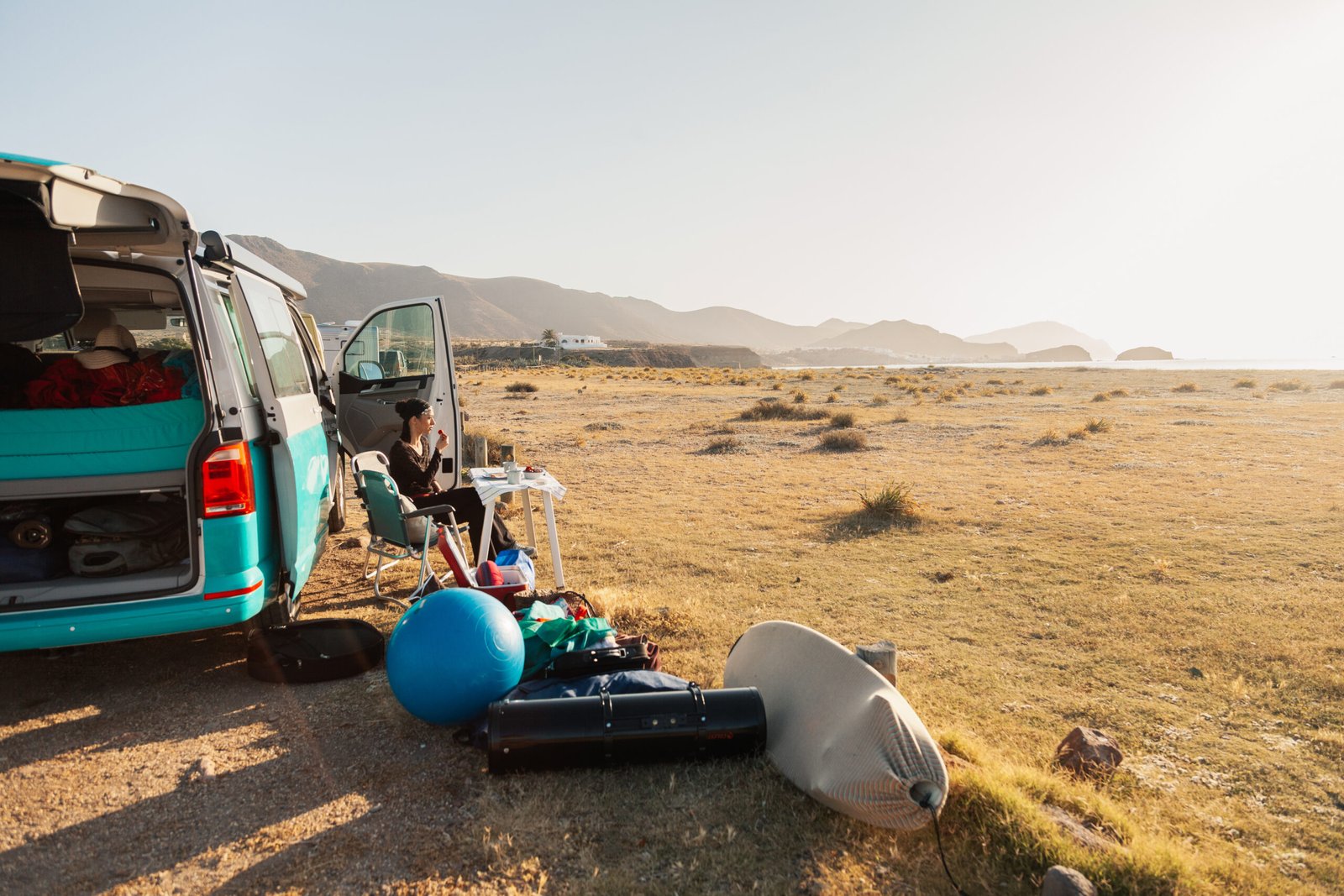You’re 50 miles from the nearest town when your van breaks down, your phone has no signal, and storm clouds are gathering overhead. Your cozy van just became a metal box in the middle of nowhere. This exact scenario happens to van lifers every week across the country.
Most van lifers pack for Instagram-worthy adventures but forget the unglamorous emergency items that could save their lives. They spend thousands on solar panels and fancy kitchen setups. Then they hit the road with a basic first aid kit and jumper cables that won’t work when they’re alone.
Van life safety isn’t about expensive gear or paranoid thinking. It’s about being prepared for the problems that happen on the road. Dead batteries, medical emergencies, severe weather, and getting lost in remote areas are real risks that proper emergency supplies can handle.
Each item is organized by emergency type: medical, vehicle breakdown, weather protection, security, and navigation backup.
31 Emergency Items Every Van Lifer Needs (But Most Forget)
Medical Emergency Supplies
You’re three hours from the nearest hospital when your travel partner starts showing signs of a severe allergic reaction. Your basic first aid kit has band-aids and antiseptic wipes. That’s not going to cut it.
Most van lifers pack like they’re going car camping for the weekend. But when you’re living on the road full-time, medical emergencies become a very real risk. Here are the eight medical emergency items that could save your life.
i. Advanced First Aid Kit
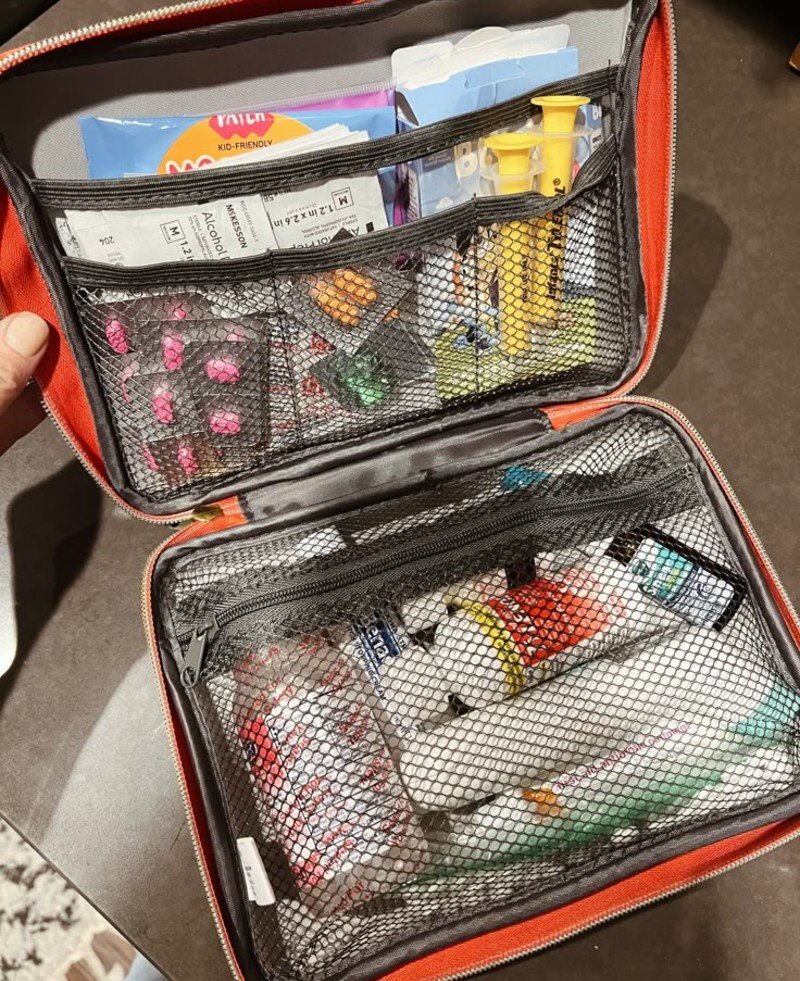
Forget those tiny kits from the pharmacy. You need something built for serious situations. The Adventure Medical Kits Comprehensive Kit covers trauma situations your basic kit can’t handle.
This kit includes:
i. Trauma pads for serious bleeding
ii. SAM splints for broken bones
iii. Emergency medications
iv. Suture materials
v. Burn treatment supplies
ii. Prescription Medication Backup (90-Day Supply)
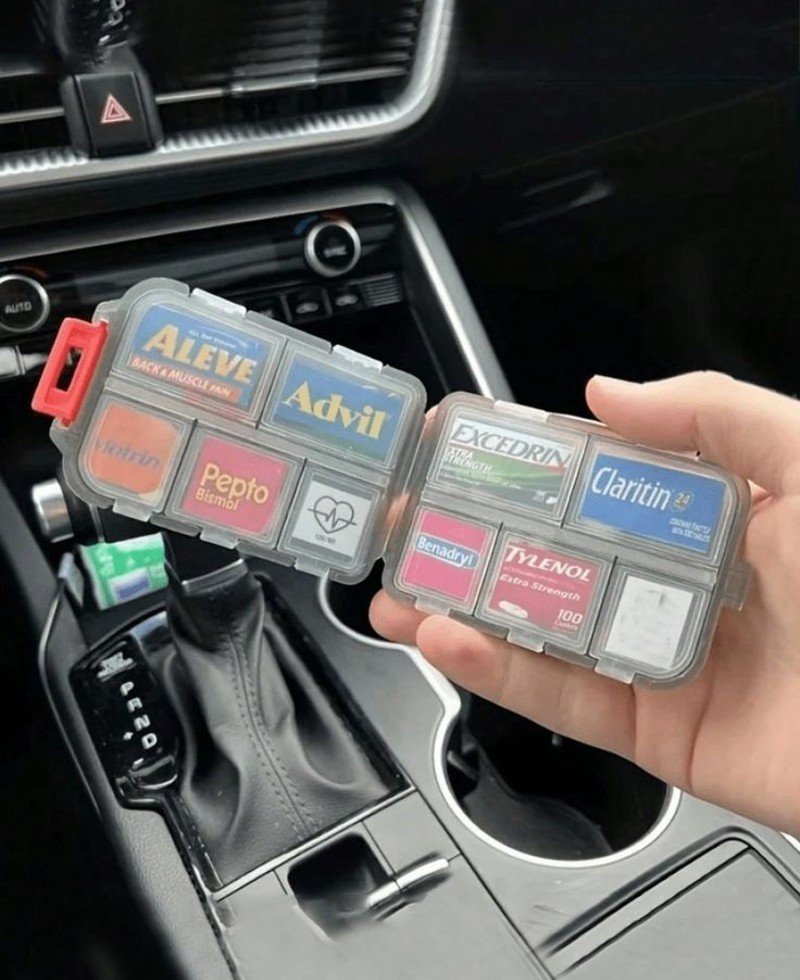
Your insurance might fight you on this. Do it anyway. Get a 90-day supply of any medications you can’t live without. Store them in two separate locations in your van. Keep them in their original containers with pharmacy labels.
This prevents problems with law enforcement and helps doctors if you need emergency care. Heat kills many medications. Use a small cooler or insulated bag if you’re in hot climates.
iii. Satellite Communicator (Garmin inReach or SPOT)
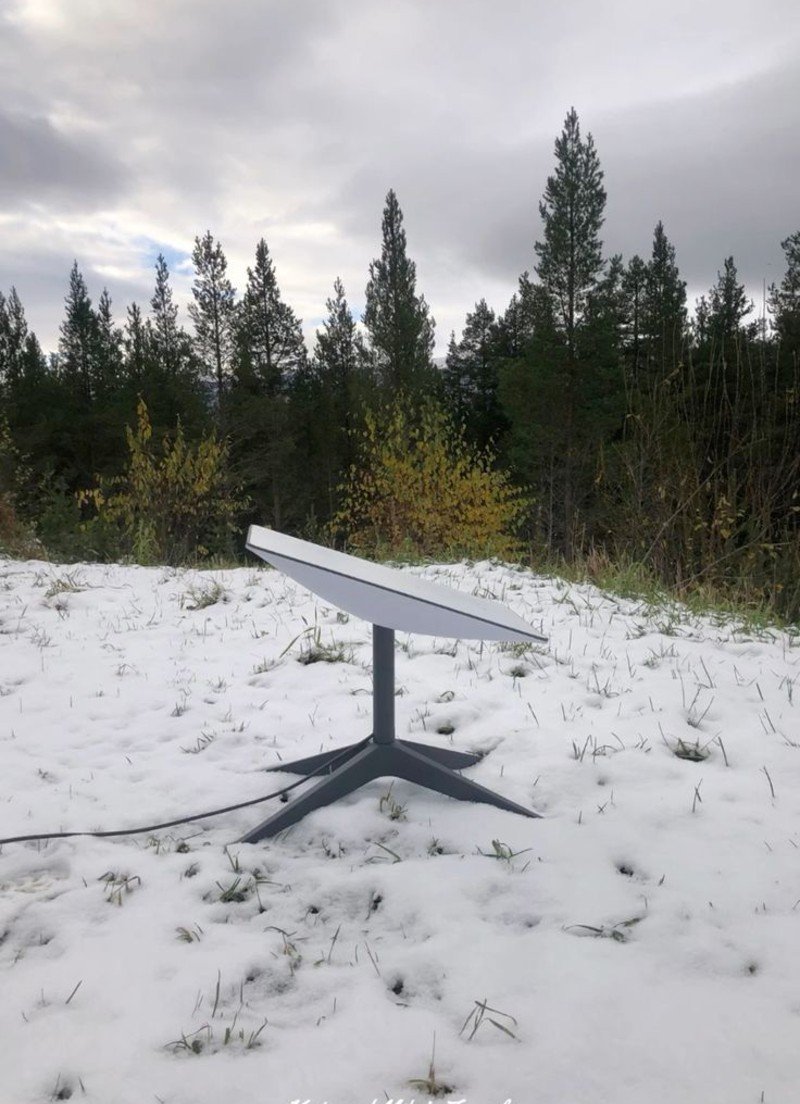
Cell phones fail when you need them most. A satellite communicator works anywhere on the planet.
The Garmin inReach Mini 2 lets you text emergency contacts and emergency services. It also shares your exact GPS location. The SPOT X is cheaper but only sends preset messages.
Both devices work with emergency medical services. They can coordinate helicopter rescues if needed. That’s worth the $150-400 cost.
iv. Water Purification System
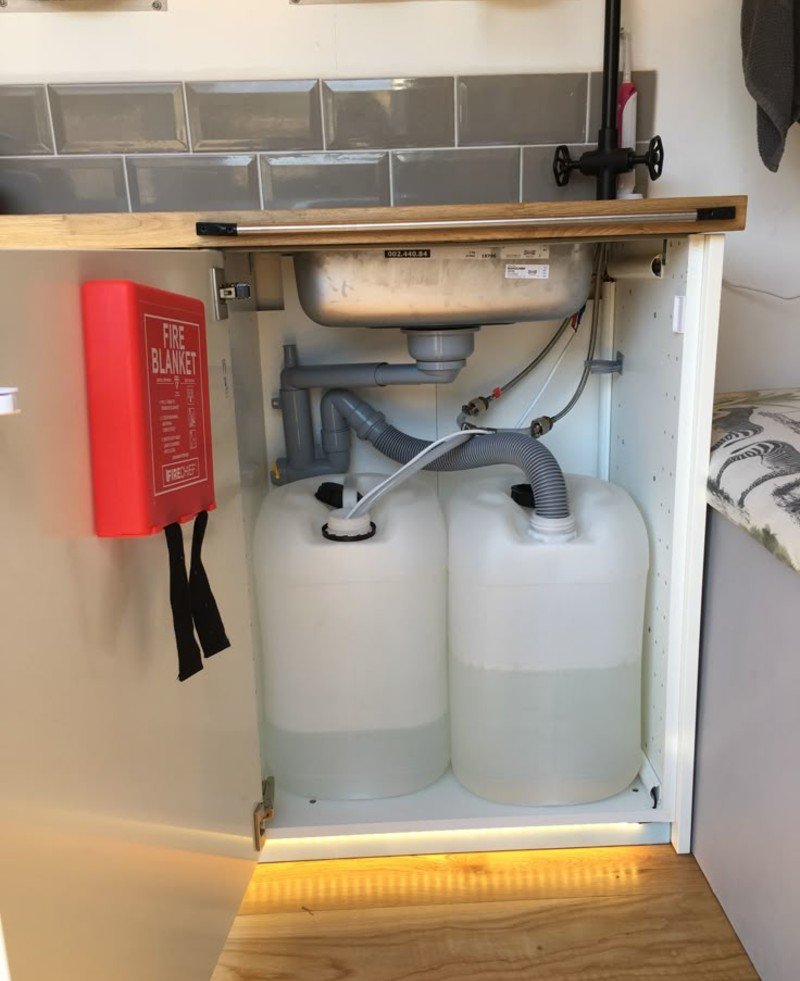
Bad water can put you in the hospital faster than anything else. You need two backup methods beyond your normal water system.
Water purification tablets work, but they taste terrible. UV sterilizers like the SteriPen kill bacteria and viruses in 90 seconds. They don’t remove chemicals or sediment.
Portable water filters like the LifeStraw Family handle both biological and chemical threats. Get one that processes at least 2 gallons per day.
v. Pain Management Kit

Pain can become a medical emergency if it prevents you from driving to safety. Stock both over-the-counter and stronger options.
i. Ibuprofen (reduces inflammation)
ii. Acetaminophen (reduces fever)
iii. Aspirin (helps with heart attacks)
iv. Topical pain relievers
v. Instant cold packs
Talk to your doctor about getting a small supply of prescription pain medication for emergencies. Some won’t do this, but many will if you explain your van life situation.
vi. Emergency Epinephrine Auto-Injector
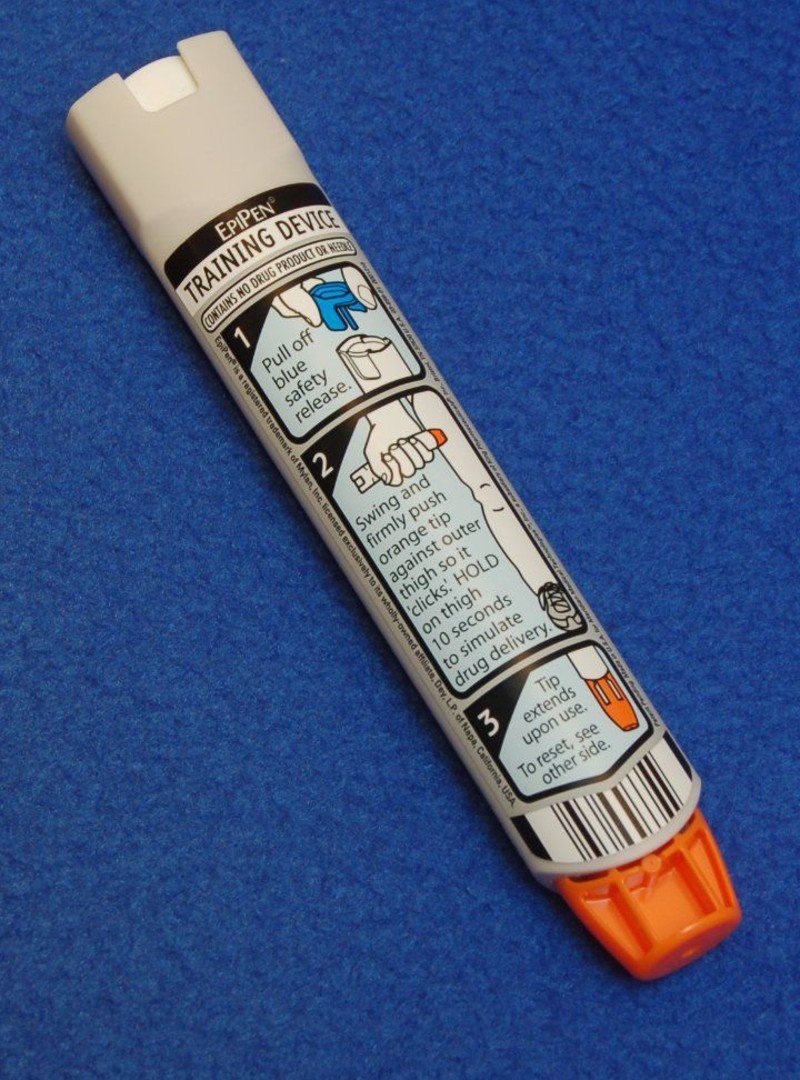
Even if you don’t have known allergies, carry an EpiPen. Allergies can develop suddenly, especially to foods or insects you encounter while traveling.
The EpiPen 2-Pak gives you two doses. The second dose might be needed if emergency help is delayed. Store these away from heat and check expiration dates every six months.
vii. Digital Thermometer and Blood Pressure Cuff
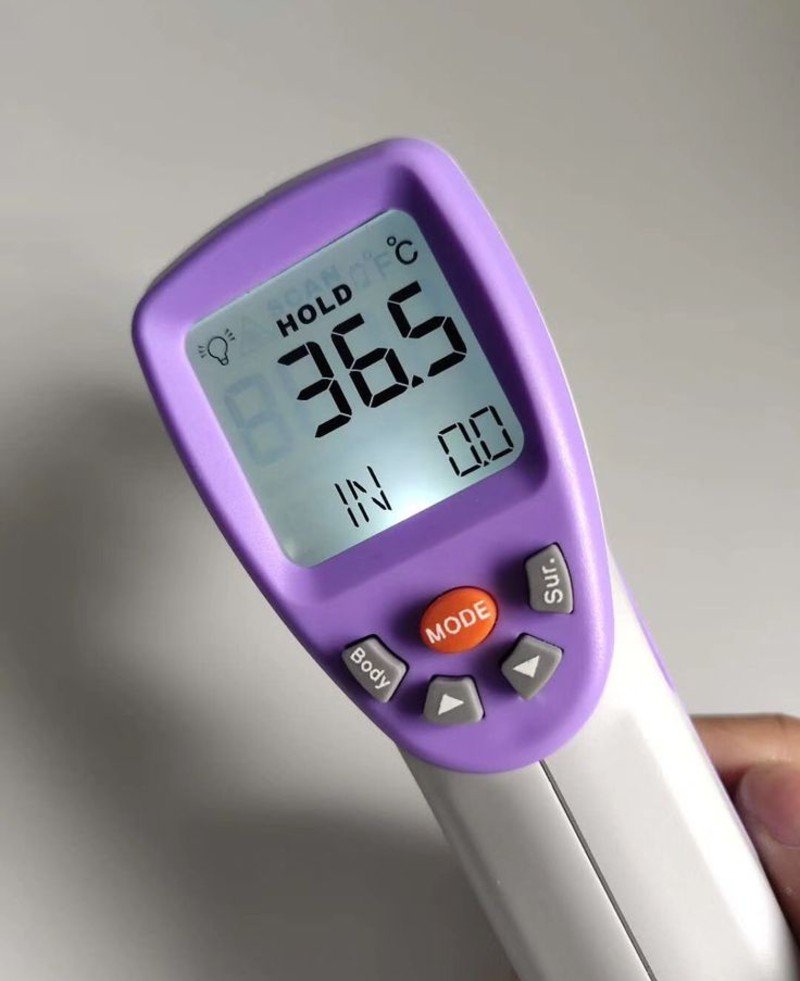
A fever over 103°F requires immediate medical attention. Blood pressure readings help diagnose heart problems, strokes, and medication reactions.
The Omron blood pressure cuffs are accurate and store previous readings. This data helps emergency room doctors make faster decisions.
viii. Emergency Antibiotics and Anti-Diarrheal Medication

Food poisoning and traveler’s diarrhea can become dangerous if they cause severe dehydration.
Prescription antibiotics like ciprofloxacin treat serious bacterial infections. Your doctor might prescribe a small supply for travel emergencies.
Over-the-counter loperamide (Imodium) stops diarrhea fast. But don’t use it if you have a fever or blood in your stool. Those symptoms need immediate medical care.
Pack oral rehydration salts too. They replace electrolytes lost during illness better than sports drinks.
Storage Tips for Van Life Safety Gear
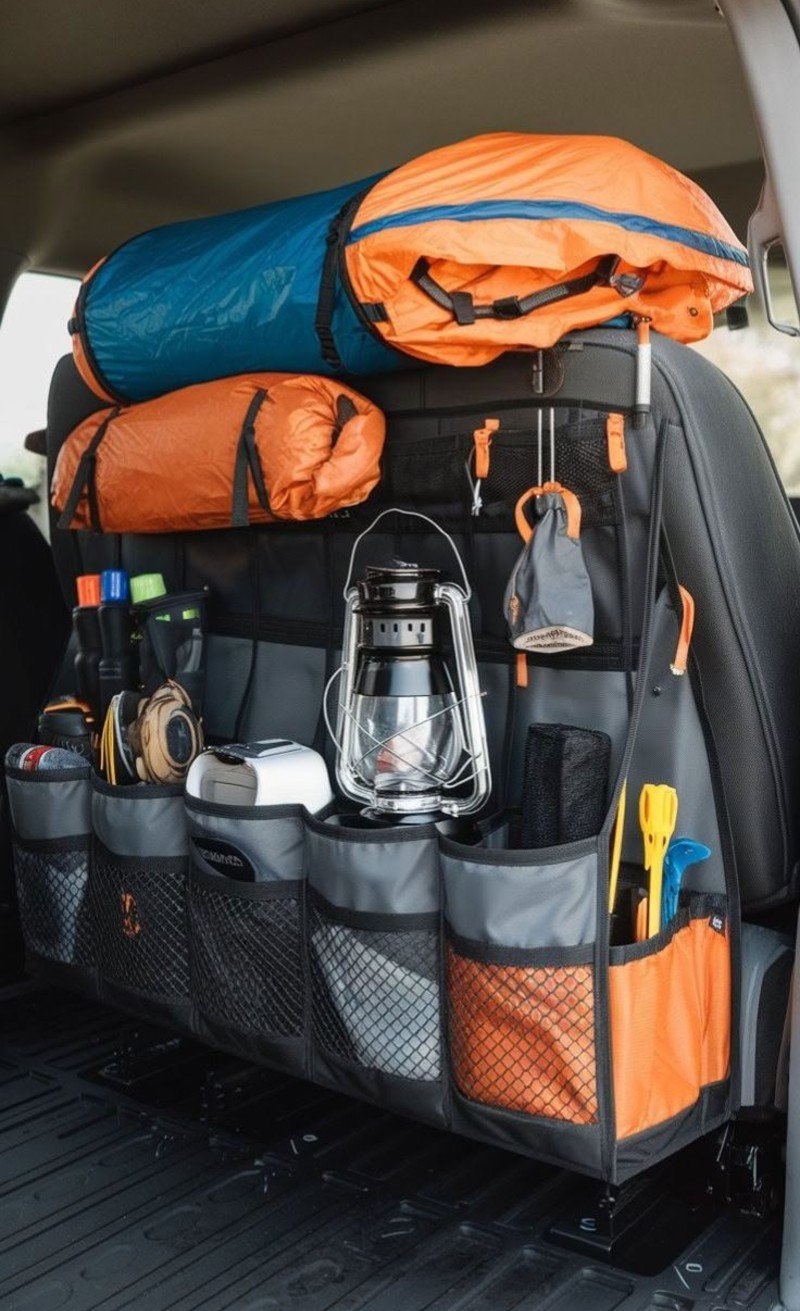
Keep all medications in a cool, dry place. Heat and humidity destroy most drugs. Use a dedicated medical storage box with good seals.
Check expiration dates every three months. Set phone reminders. Replace expired items immediately.
Practice using everything before you need it. Read instructions when you’re calm, not during an emergency.
These eight items turn your van into a mobile medical station. They won’t replace professional medical care, but they’ll keep you alive until you can reach it.
Vehicle Breakdown Essentials
Your van dies in the middle of nowhere. No cell signal. The next car won’t pass for hours. This is when you find out if your van breakdown kit is useful or just taking up space.
Vehicle breakdowns happen to everyone. But most van lifers pack the wrong emergency van repair supplies. They bring jumper cables, but no one to help. They carry a spare tire, but no way to change it safely on uneven ground.
i. Portable Jump Starter (Not Jumper Cables)

Jumper cables are useless when you’re alone. You need another running vehicle to make them work. A portable jump starter gives you independence.
The NOCO Boost Plus GB40 starts most van engines up to 20 times on one charge. It fits in a glove box and includes USB ports for charging phones.
Cheaper jump starters fail when you need them most. Cold weather kills weak units. Spend $100-150 for a reliable one that works below freezing.
ii. Complete Tire Repair Kit and 12V Compressor
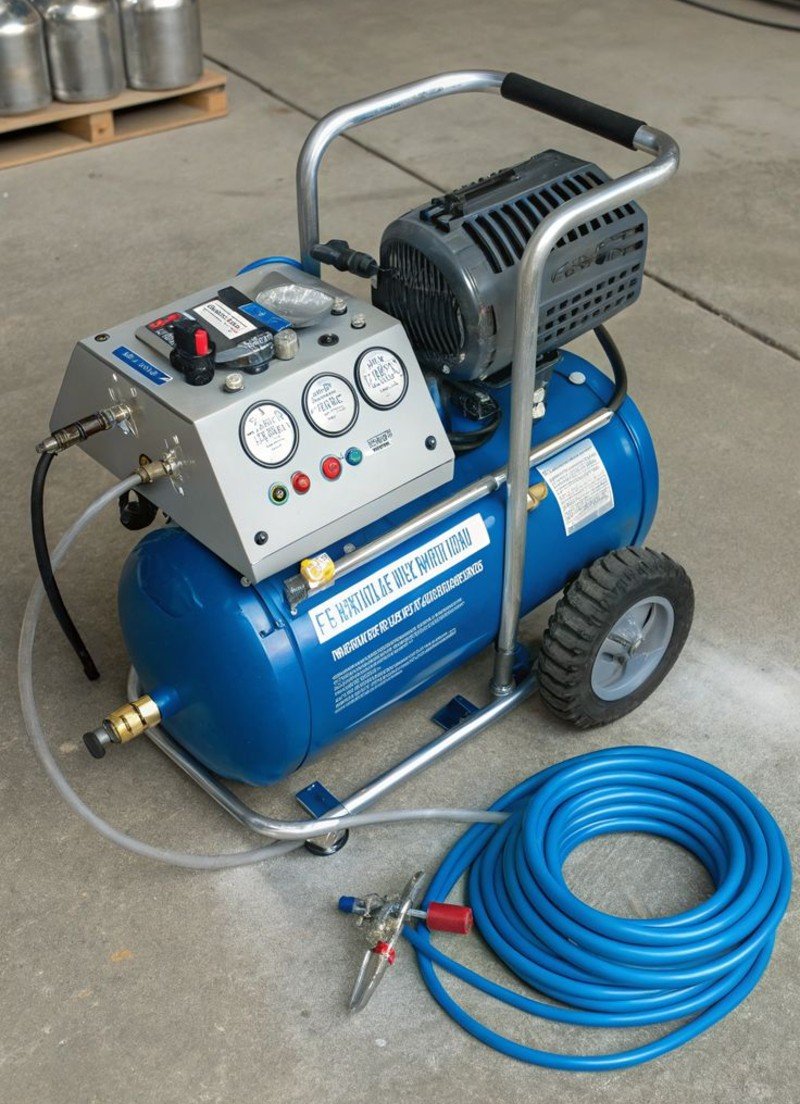
A spare tire won’t help if you can’t change it safely. You need more than just a jack. Your van breakdown kit needs:
i. Heavy-duty tire iron (not the cheap one from the factory)
ii. Jack stands or wheel chocks
iii. Tire plug kit for punctures
iv. 12V air compressor
v. Tire pressure gauge
The Viair 88P compressor fills van tires fast and runs off your 12V outlet. Tire plug kits fix most punctures in 10 minutes. This beats waiting hours for roadside assistance.
iii. Basic Tool Set for Common Van Repairs

Most breakdowns need simple fixes. You don’t need a full shop, just the right tools for your van. For Ford Transit vans, carry:
i. 10mm, 13mm, 15mm, and 17mm wrenches
ii. Phillips and flathead screwdrivers
iii. Needle-nose pliers
iv. Wire strippers
v. Electrical tape
iv. Emergency Fluids for Common Failures
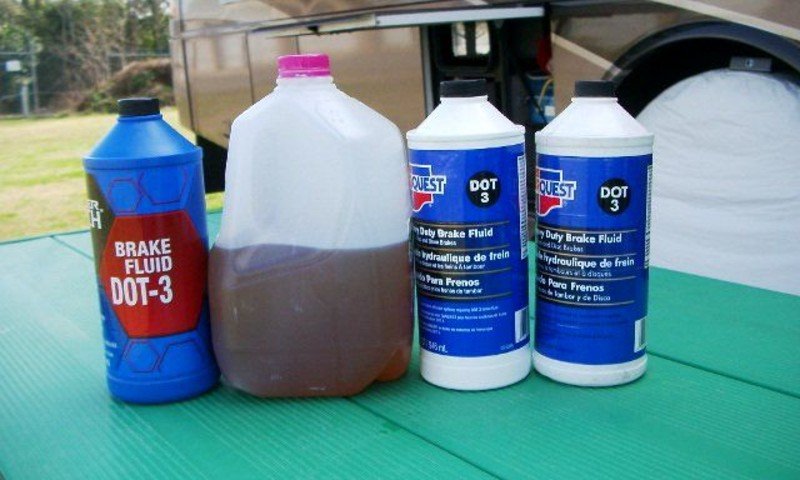
Fluid leaks can strand you fast. Carry small bottles of the fluids that keep your van running. Essential fluids:
i. Engine oil (2 quarts minimum)
ii. Coolant (1 gallon)
iii. Power steering fluid
iv. Brake fluid
v. Windshield washer fluid
Store these in a leak-proof container. Spilled fluids damage your van’s interior and smell terrible. Check fluid levels weekly. Catching leaks early prevents roadside emergencies.
v. Recovery Straps and Tow Points
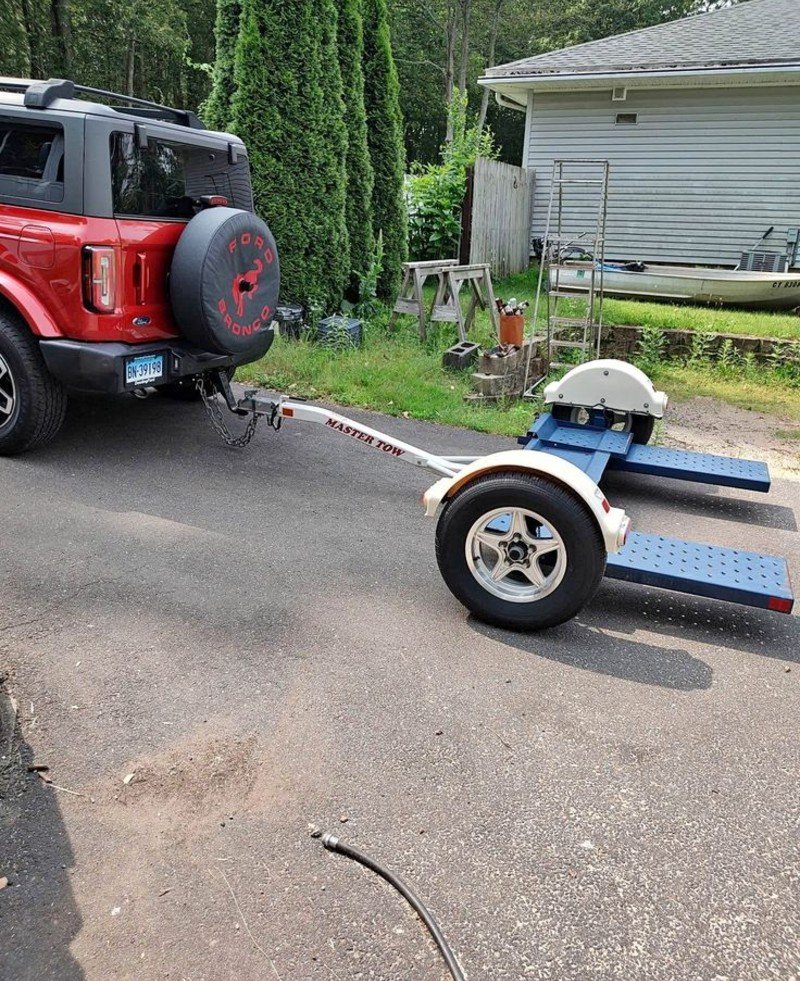
Getting stuck happens. Sand, mud, snow, or ice can trap your van. Recovery straps get you unstuck without calling a tow truck.
Buy straps rated for twice your van’s weight. A 6,000-pound van needs 12,000-pound straps. Cheap straps break and can hurt people.
Know your van’s tow points before you need them. Front and rear attachment points are usually marked in your owner’s manual. Never use trailer hitches for recovery. They’re not built for side loads and can break.
vi. Portable Power Bank for Essential Electronics
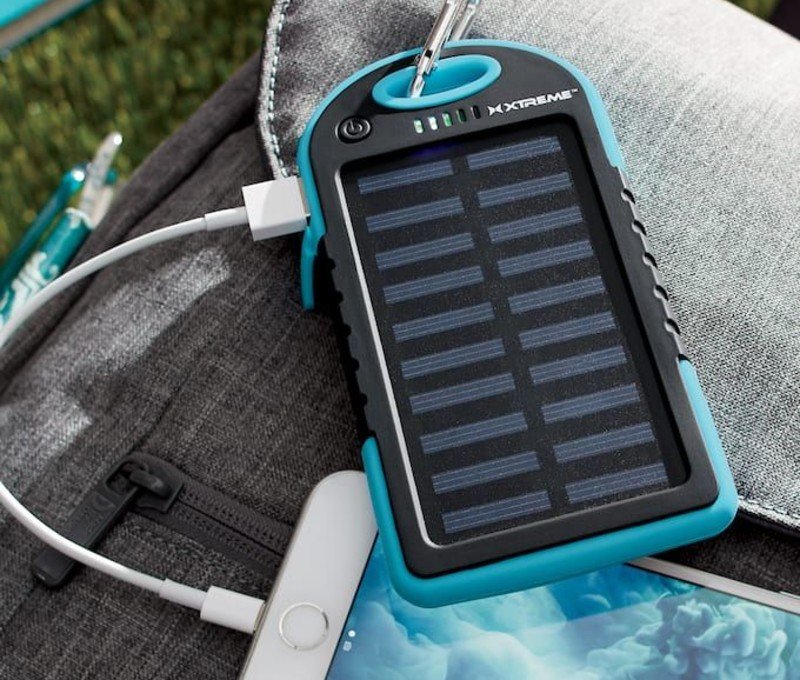
Your van’s electrical system might fail, but you still need power for phones and emergency lights.
The Goal Zero Yeti 500X powers phones for days and runs LED lights all night. It charges from 12V, solar panels, or wall outlets.
Smaller power banks work for phones only. The Anker PowerCore 26800 charges most phones 6-7 times. Keep power banks charged above 50%. Cold weather reduces their capacity.
vii. CB Radio for Emergency Communication
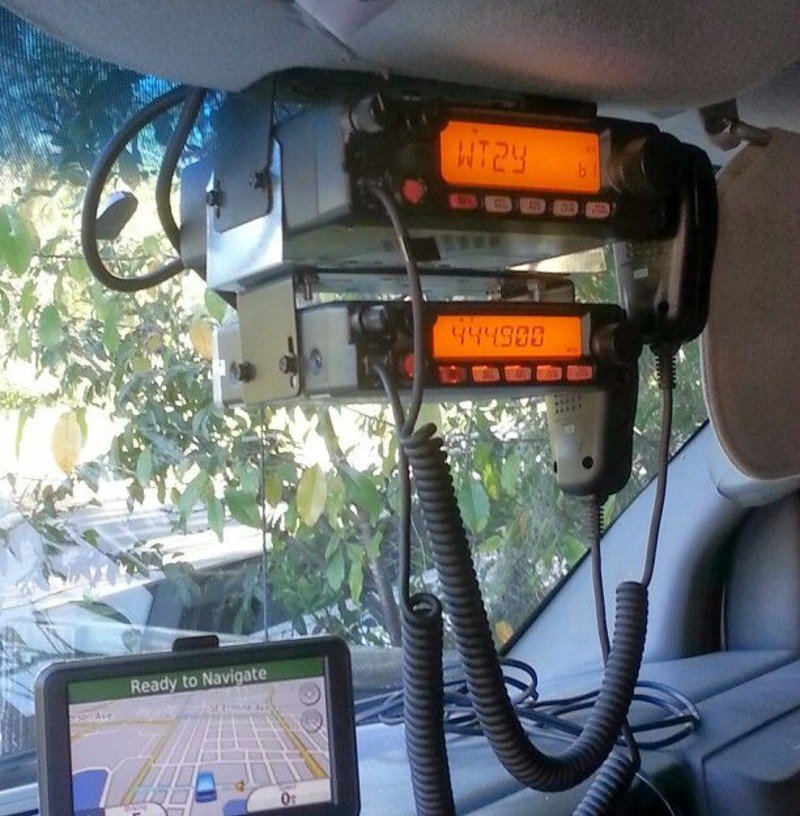
Cell phones fail in remote areas. CB radios work when nothing else does. CB radios reach other drivers, truckers, and emergency services on channel 9. The range is 5-15 miles, depending on terrain.
The Cobra 29 LX is simple and reliable. Mount it permanently or use a magnetic antenna for a temporary setup.
Ham radios have longer range but require a license. CB radios need no license and work immediately.
viii. Common Replacement Parts
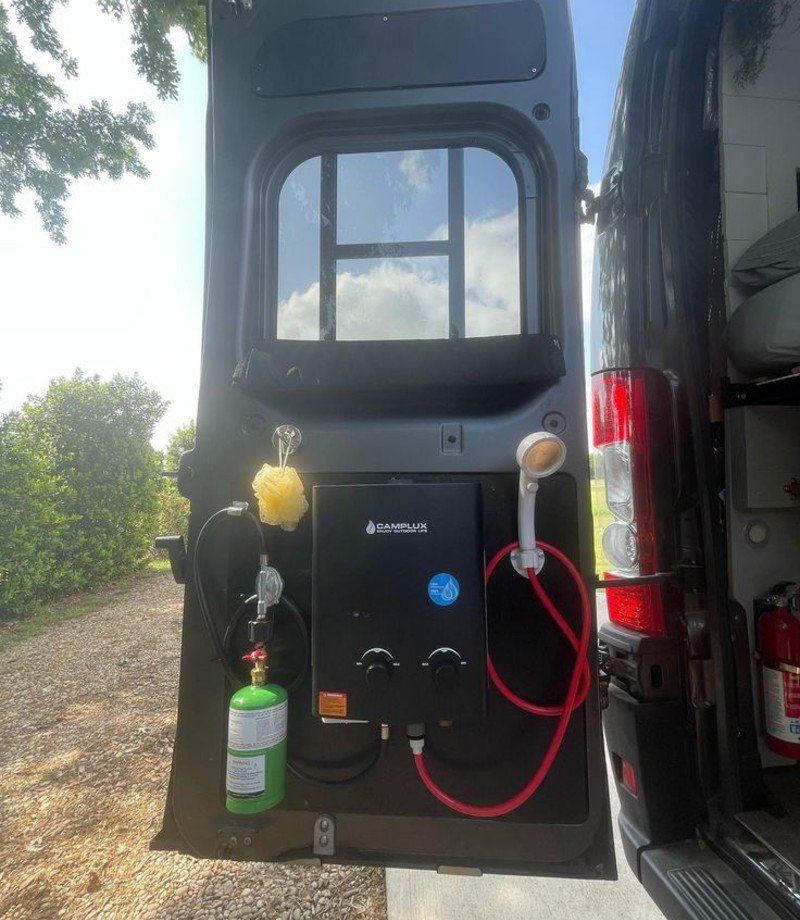
Some parts fail predictably. Carrying spares prevents long waits for parts delivery. Essential spare parts:
i. Alternator belt (your van’s specific size)
ii. Radiator hoses (upper and lower)
iii. Thermostat
iv. Fuses (10-amp and 20-amp varieties)
v. Headlight and taillight bulbs
Weather Protection & Survival
A sudden snowstorm drops six inches in two hours. Your van’s heater stops working. The temperature is dropping fast, and you’re 40 miles from the nearest town. Your cozy van just became a metal freezer.
Weather kills more van lifers than breakdowns or accidents. Heat stroke, hypothermia, and dehydration happen fast when you’re unprepared. Your van life weather emergency supplies need to keep you alive when your normal systems fail.
i. Emergency Bivvy Sacks and Space Blankets

Your van’s insulation won’t help if the heater dies. Emergency bivvy sacks trap body heat and block wind. They’re like a sleeping bag you can wear.
The SOL Emergency Bivvy reflects 90% of your body heat back to you. It fits one person and weighs 3.5 ounces. The material tears easily, but it works for several nights if you’re careful.
Space blankets are backup plans for your backup plan. They’re cheap, light, and fold smaller than a deck of cards. Buy the thicker ones from camping stores. The thin ones from first aid kits rip when you look at them wrong.
ii. Multi-Fuel Emergency Stove
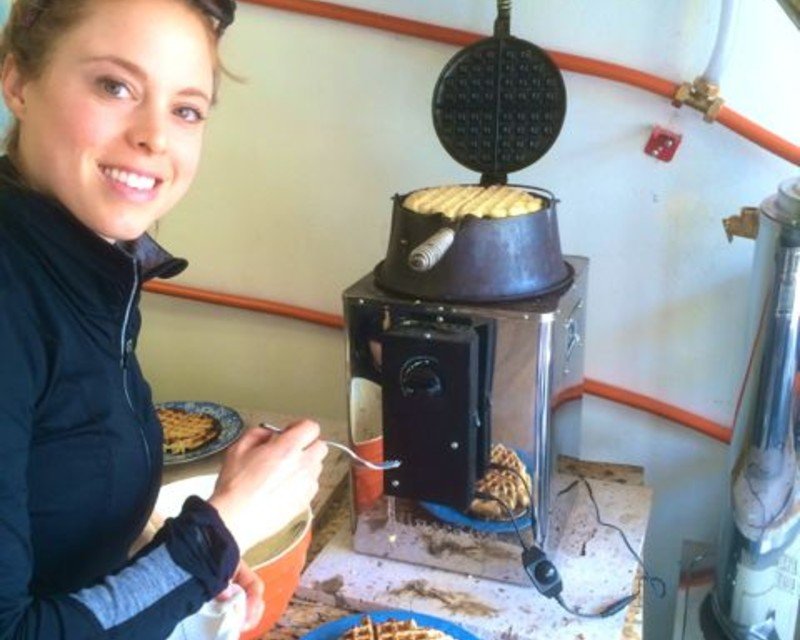
Your van’s propane might freeze. Your electrical system might fail. You still need heat and hot food to survive cold weather.
The MSR WhisperLite Universal burns white gas, kerosene, and unleaded gasoline. Gas station fuel works when camping fuel isn’t available. This stove boils water in any weather conditions.
Simpler stoves work too. The Esbit pocket stove burns solid fuel tablets and costs under $20. It’s not fast, but it works when everything else fails.
Store extra fuel safely. Use approved containers and keep them away from heat sources.
iii. Weather Radio with NOAA Alerts
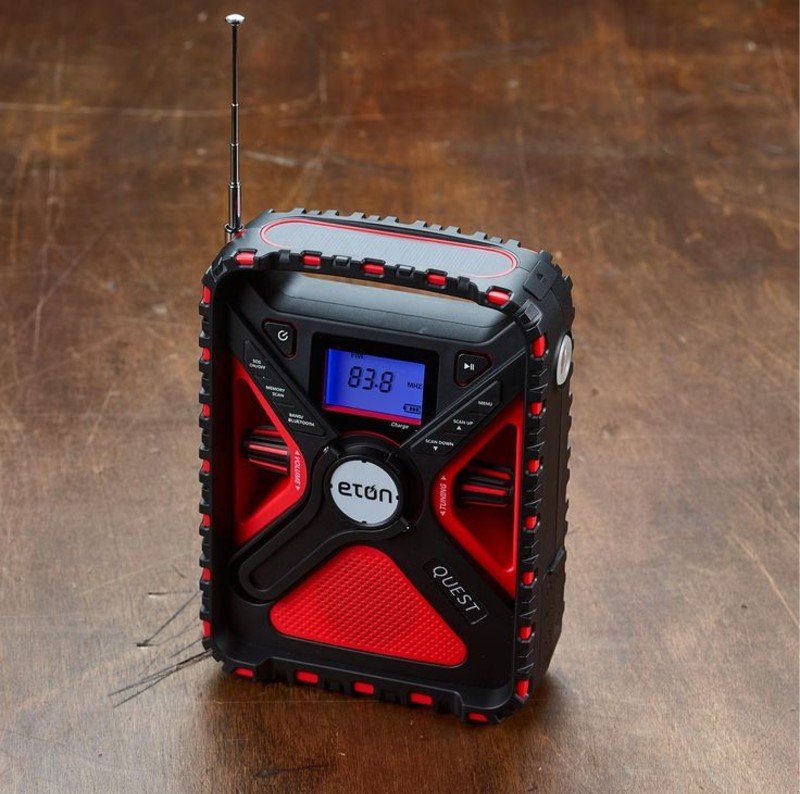
Weather changes fast in the mountains and plains. You need a warning of dangerous conditions.
The Midland ER310 weather radio gets NOAA alerts 24/7. It charges from a hand crank, solar panel, or USB. The built-in flashlight and phone charger make it useful beyond weather alerts.
NOAA broadcasts tornado warnings, flash flood alerts, and winter storm warnings. These alerts can save your life if you’re in the wrong place when bad weather hits.
iv. Emergency Water Storage (Collapsible Containers)
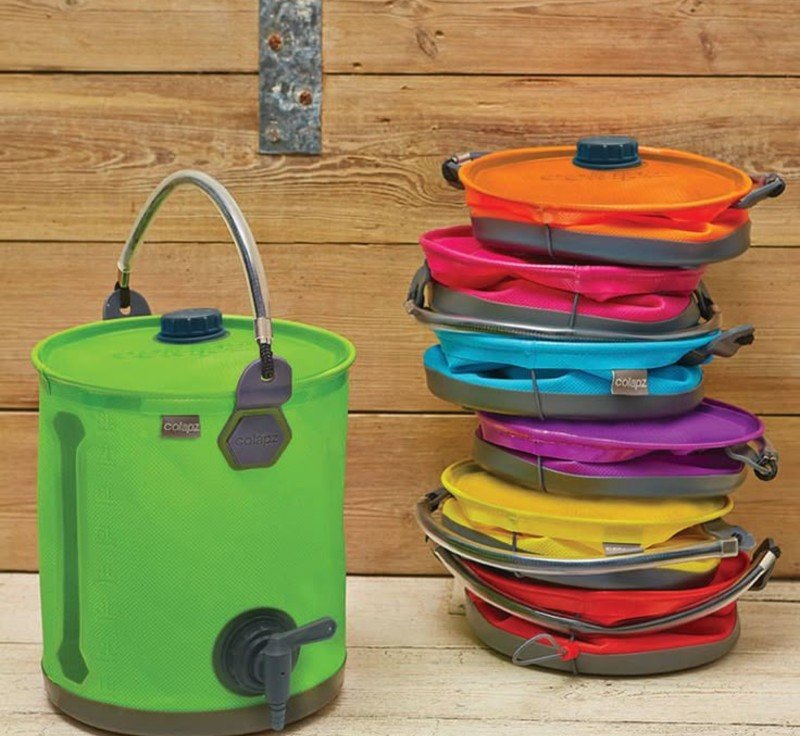
Your main water tank might freeze or leak. Hot weather increases water needs fast. Emergency water storage keeps you alive when your primary system fails.
Collapsible water containers store 5-7 gallons and fold flat when empty. The Reliance Fold-A-Carrier holds 5 gallons and has a spigot for easy use.
Store water containers where they won’t freeze. Frozen water containers burst and become useless. Keep them inside your heated van space during winter.
Plan one gallon per person per day minimum. Hot weather doubles water needs. Cold weather still requires lots of water to prevent dehydration.
v. Fire Starting Kit for Wet Conditions
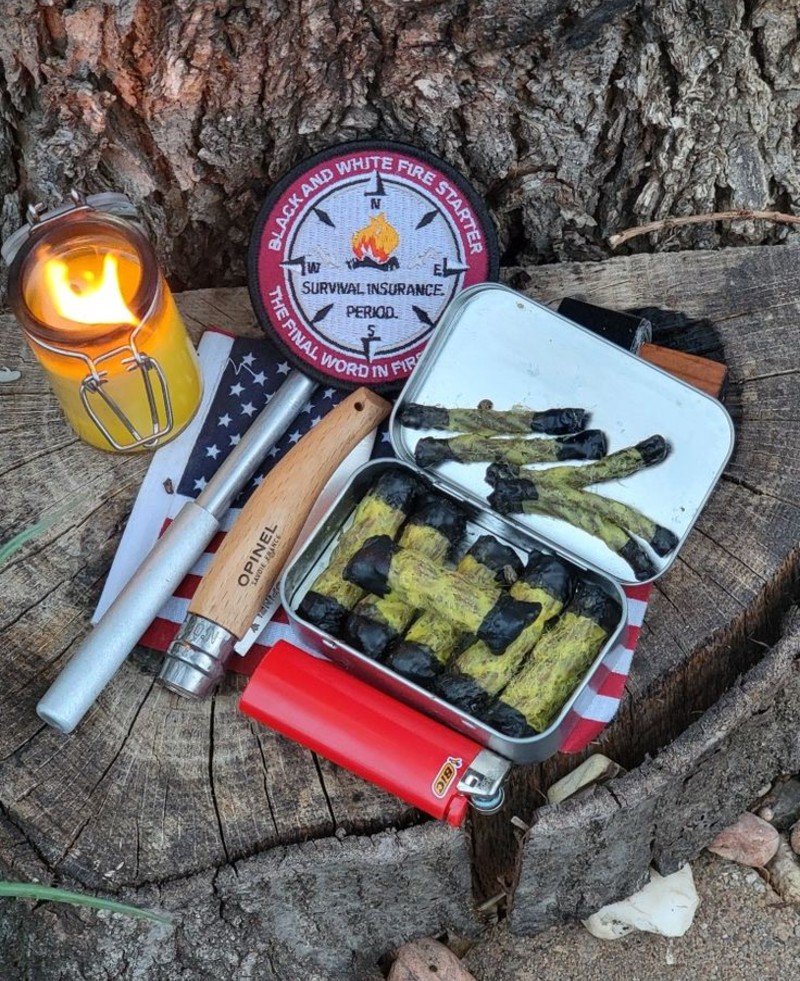
Matches fail when wet. Lighters don’t work in extreme cold. You need fire-starting methods that work in any weather. Waterproof fire starters include:
i. Magnesium fire starter (works when soaked)
ii. Waterproof matches in a sealed container
iii. Petroleum jelly cotton balls (burn hot and long)
iv. Birch bark or fatwood kindling
The Light My Fire Swedish FireSteel works after being underwater. It creates sparks hot enough to light wet tinder. Practice using it before you need it. Store tinder in waterproof containers. Wet tinder won’t catch even with good sparks.
vi. Emergency Food (72-Hour Supply)
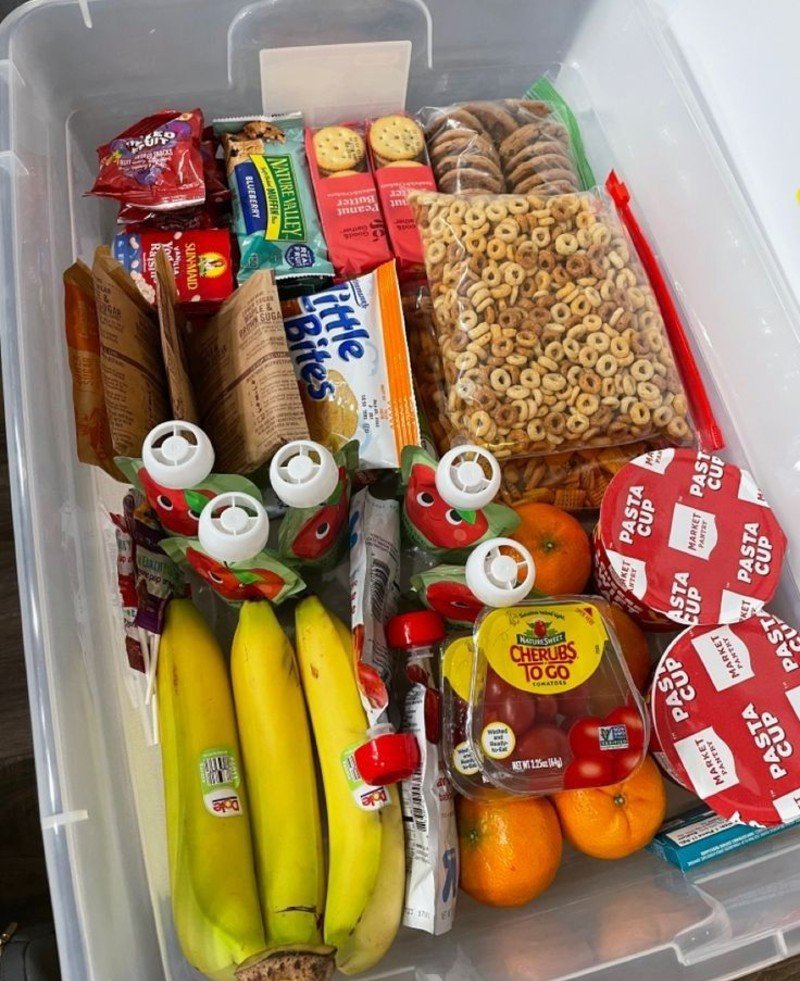
Your van’s refrigerator might die. Stores might be closed or unreachable. Emergency food keeps you fed when normal food sources fail.
Freeze-dried meals last 25 years and taste decent. Mountain House meals cook with just hot water. They’re expensive but reliable. Cheaper options work too:
i. Instant oatmeal and dried fruit
ii. Peanut butter and crackers
iii. Energy bars and nuts
iv. Canned soup and meat
Store 2,000 calories per person per day minimum. Cold weather burns more calories. Stress and fear increase hunger, too.
vii. Signaling and Rescue Equipment
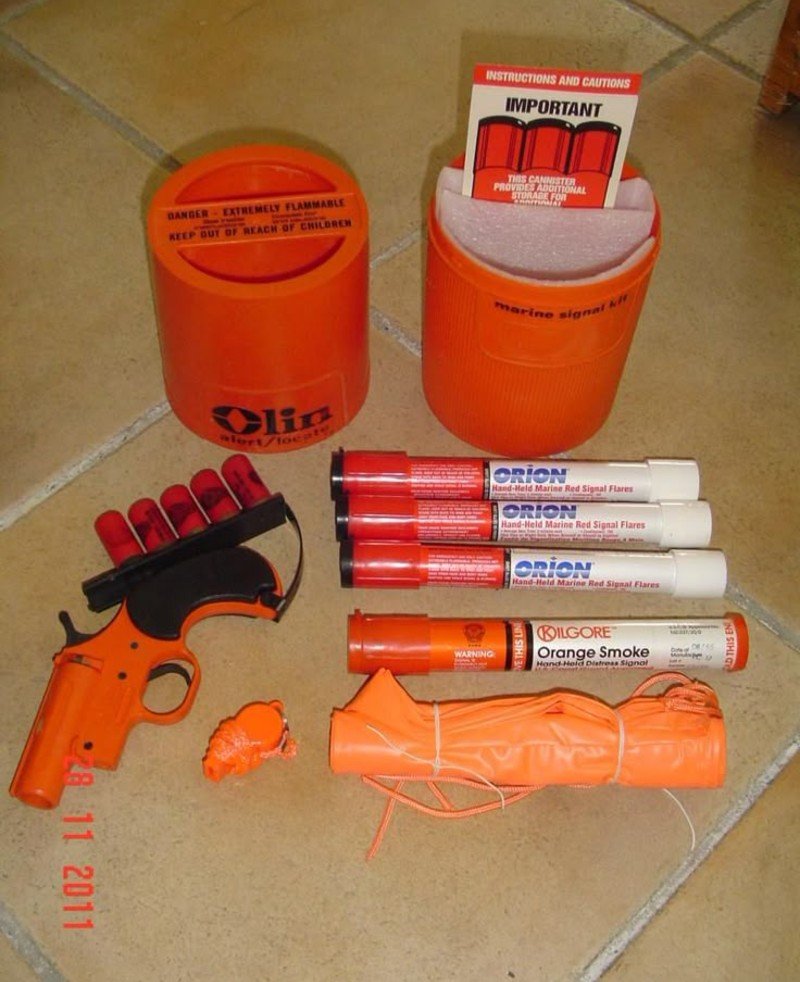
If you’re stranded, rescuers need to find you. These emergency shelter items help search teams locate you fast. Essential signaling gear:
i. Emergency flares (road flares work day and night)
ii. Signal mirror (reflects sunlight for miles)
iii. Emergency whistle (sound travels far)
iv. Bright orange or red fabric flags
The Ultimate Survival Technologies StarFlash Mirror reflects sunlight 10+ miles. It works better than flares during daylight hours. Three of anything means emergency. Three whistle blasts, three mirror flashes, or three fires spaced apart signal distress.
Staying Alive When Weather Turns Bad
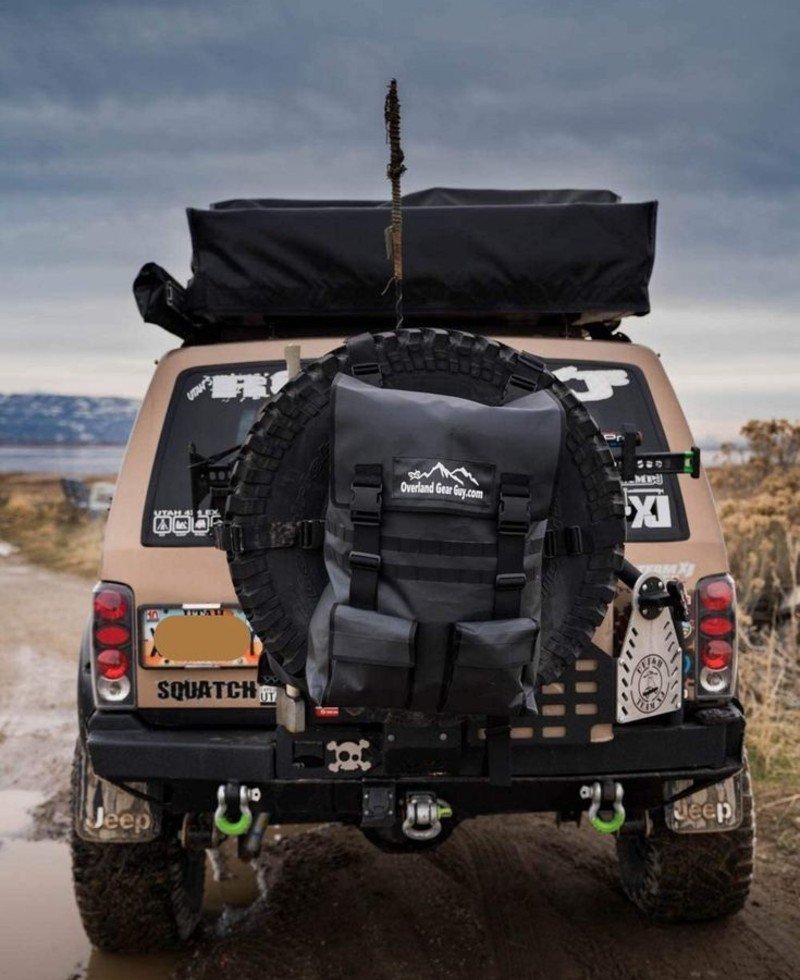
Layer your emergency shelter solutions. Don’t rely on one item to save you. Space blankets are backup bivvy sacks. Fire starters have multiple ignition methods.
Practice using everything when you’re comfortable and warm. Learning during an emergency usually ends badly.
Check weather forecasts obsessively. The best survival gear for van life is avoiding dangerous weather completely.
These seven items turn weather emergencies into uncomfortable inconveniences. They weigh less than 10 pounds total but can keep you alive for days when your van systems fail.
Security & Personal Safety
Someone is watching your van. They saw you leave for groceries and know you’ll be gone for an hour. Your expensive solar panels and obvious van life setup make you a target. When you return, your door is open, and everything valuable is gone.
Van life security isn’t about being paranoid. It’s about making yourself a harder target than the van parked next to you. Thieves want easy scores, not challenges. These five personal safety van living items protect you and your belongings when things go wrong.
i. Door and Window Security Reinforcement
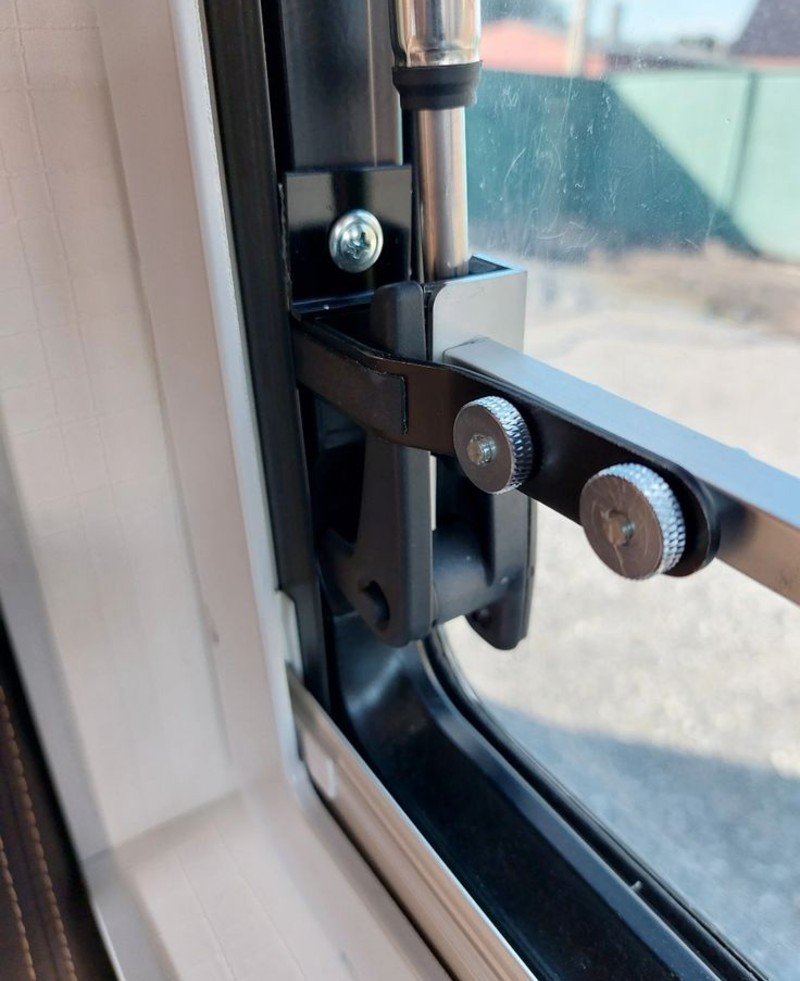
Your van’s factory locks won’t stop determined thieves. They’re designed to keep honest people honest, not stop break-ins.
Add security that works:
i. Sliding door security bars (block the door from opening)
ii. Window security film (makes glass harder to break)
iii. Additional deadbolts on rear doors
iv. Motion sensor lights (thieves hate attention)
The Master Lock Security Bar fits most sliding doors and takes 30 seconds to install. It’s visible from outside, which scares off most thieves before they try anything.
Window security film costs $50 and takes an afternoon to install. It won’t stop a determined thief, but it slows them down and makes noise.
ii. Fireproof Document Storage
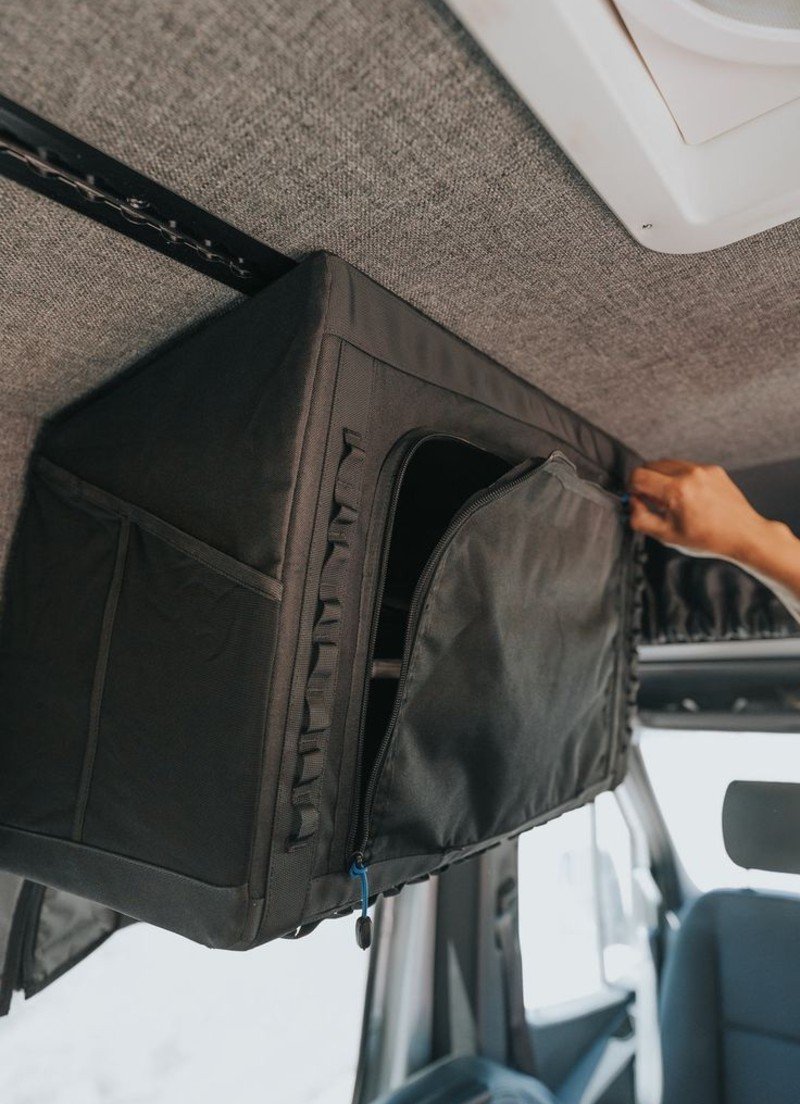
Your ID, passport, insurance papers, and vehicle title are harder to replace than your laptop. Fire, theft, or water damage can destroy them in minutes.
The SentrySafe 1200 fireproof box protects documents from fire up to 1,550°F for 30 minutes. It’s waterproof too. The box fits under most van beds and weighs 17 pounds. Store copies of everything important:
i. Driver’s license and passport
ii. Vehicle registration and insurance
iii. Medical information and emergency contacts
iv. Bank account and credit card numbers
Keep the originals in the fireproof box. Carry copies in your wallet.
iii. Emergency Cash and Hidden Storage
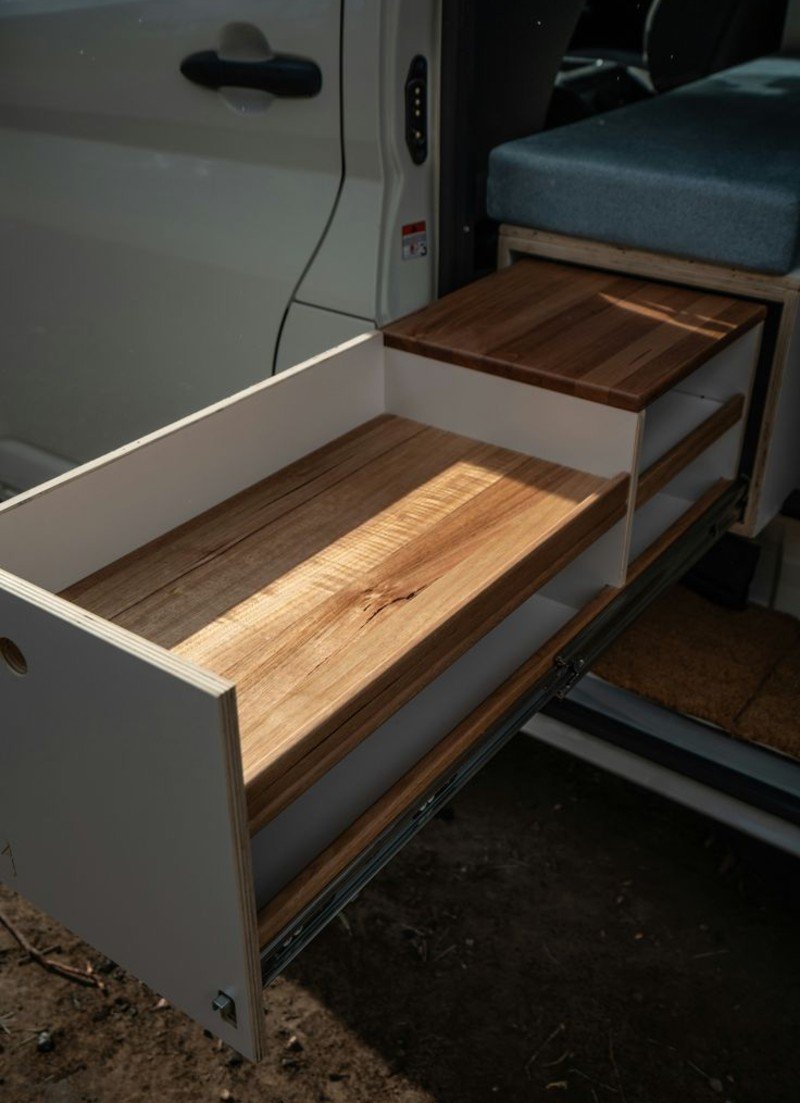
Credit cards fail. ATMs break. Banks close during emergencies. Cash works when nothing else does. Hide $500-1000 in your van using multiple locations:
i. Fake food containers (empty peanut butter jars)
ii. Inside the spare tire (in a waterproof bag)
iii. Taped under drawers or cabinets
iv. Inside first aid kit containers
The Diversion Safe looks like a real WD-40 can but stores cash and small valuables. Thieves grab obvious targets like laptops and cameras. They don’t steal cleaning supplies.
Split your emergency cash between 3-4 hiding spots. If one location is discovered, you still have backup funds.
iv. Personal Safety Alarms and Communication
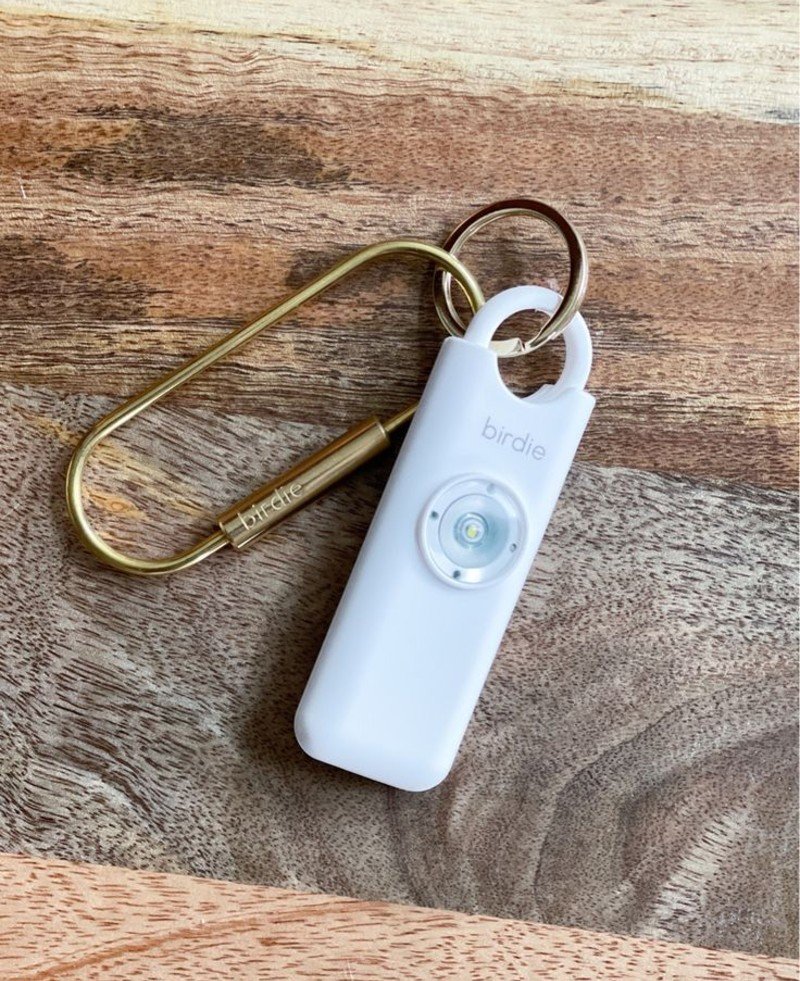
Personal safety van living means having ways to call for help and scare off threats. Essential personal protection devices:
i. Personal safety alarm (130-decibel sound)
ii. Whistle on keychain
iii. Pepper spray (check local laws)
iv. A bright flashlight for identification
The Vigilant Personal Alarm makes noise loud enough to wake campgrounds. The sound startles attackers and alerts others to help you.
Keep these items where you can reach them fast. A safety alarm in your storage compartment won’t help during an emergency.
v. Backup Identification and Payment Methods
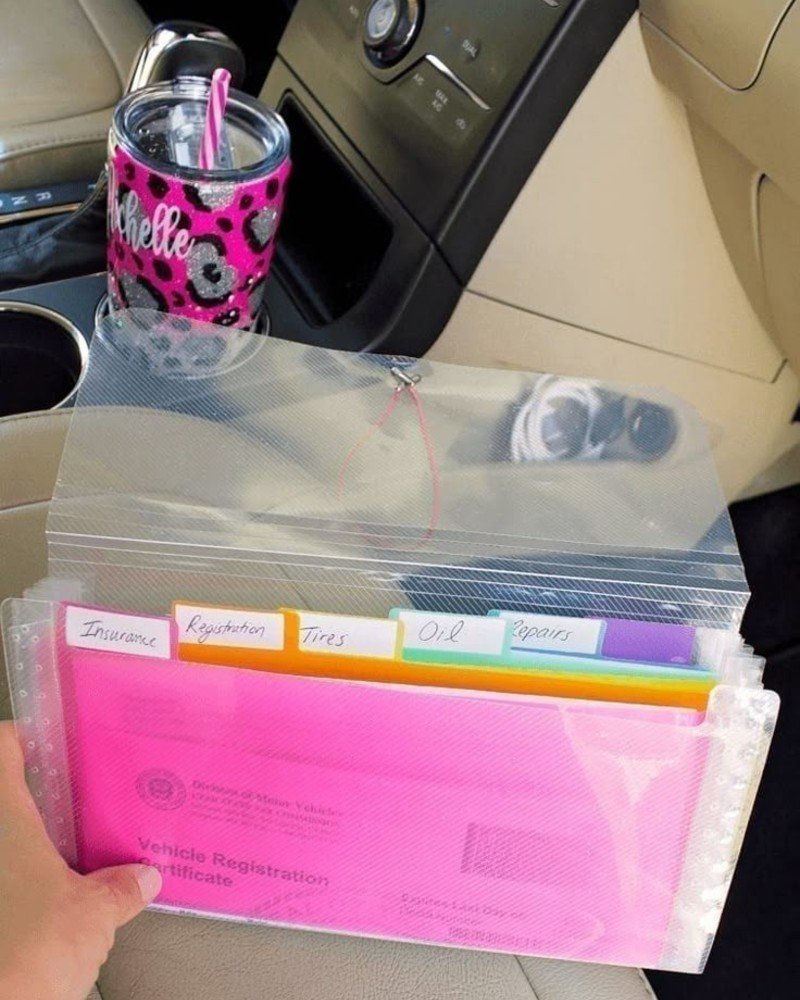
Losing your wallet can end your trip. Having backups keeps you mobile when your primary ID and money are stolen or lost. Store backup items separately from originals:
i. Photocopy of driver’s license
ii. Secondary credit/debit card
iii. Small amount of cash ($100-200)
iv. Emergency contact information
Mail copies to yourself at the general delivery post offices along your route. This gives you access to backup documents anywhere in the country.
Use different banks for your primary and backup cards. If one bank freezes your account, the other still works.
Navigation & Communication Backup
Your phone dies just as you realize you took the wrong turn 20 miles ago. The GPS screen shows nothing but blue dots on a gray background. No cell towers for 50 miles. You’re officially lost, and getting more lost with every mile you drive.
Most van lifers rely on their phones for everything. That works until it doesn’t. Dead batteries, broken screens, and no signal areas can turn a simple drive into a dangerous situation. These three emergency navigation items get you back on track when technology fails.
i. Offline GPS Units and Apps
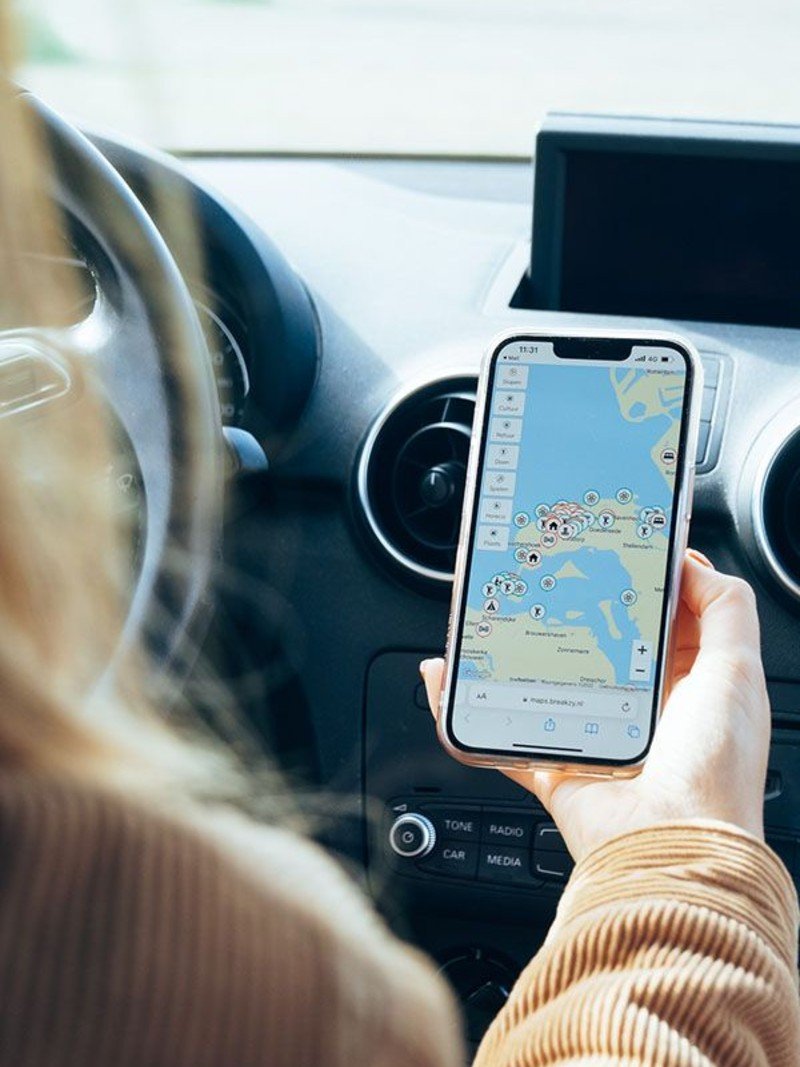
Your phone’s GPS works without cell service, but only if you download maps first. Most people forget this step until they’re already lost. Download offline maps before you need them:
i. Google Maps (download specific regions)
ii. Gaia GPS (detailed topographic maps)
iii. iOverlander (van life specific locations)
iv. Maps.me (works completely offline)
Dedicated GPS units work better than phones in remote areas. The Garmin Montana 700i has detailed maps, long battery life, and two-way messaging. It costs $600 but works when phones fail.
Cheaper backup GPS units like the Garmin eTrex 22x cost under $200. They’re not fancy, but they show your location and basic roads without any cell service needed.
ii. Emergency Communication and Power Backup
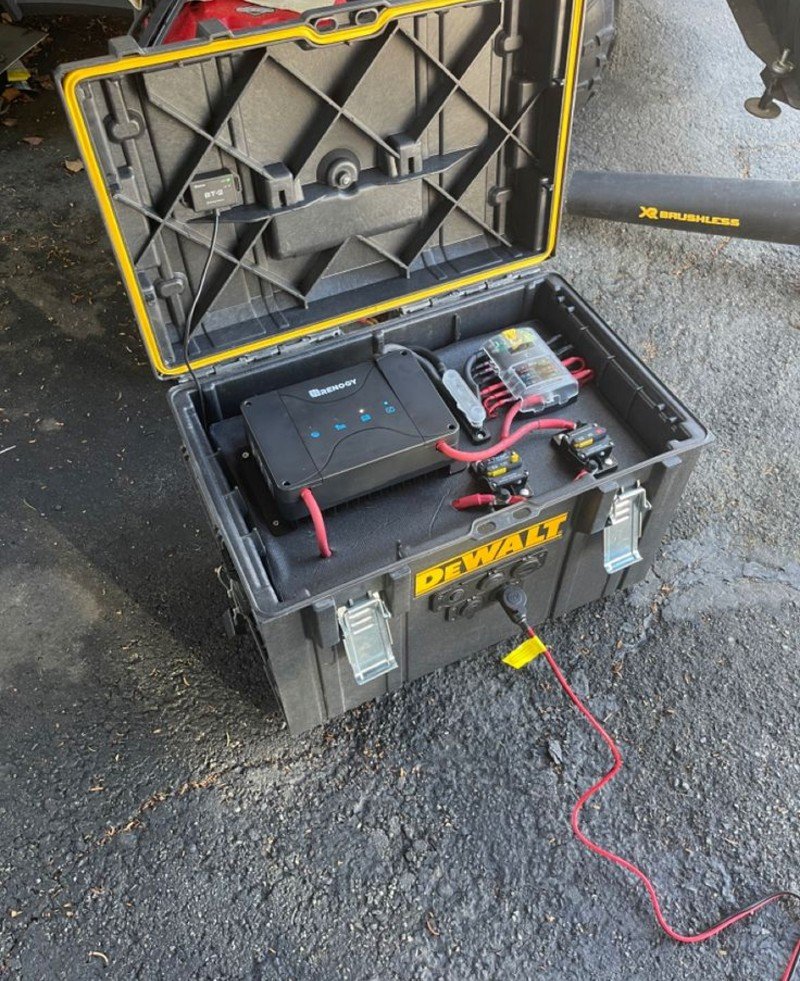
Dead electronics can’t help you. Portable power keeps your van life communication devices working when your van’s electrical system fails.
The Goal Zero Nomad 20 solar panel charges phones and GPS units directly from sunlight. It folds flat and weighs two pounds. Cloudy weather slows charging, but it works better than nothing.
Power banks provide backup when solar doesn’t work. The Anker PowerCore 26800 charges most phones 6-7 times. Keep it charged above 50% for best performance.
Ham radios reach farther than CB radios but require a license. The Technician license test costs $15 and takes one hour. Study apps like HamExam make passing easy.
The Yaesu FT-65R handheld ham radio works on repeater networks across the country. Range is 5-50 miles, depending on terrain and repeater locations.
iii. Paper Maps and Basic Compass Navigation
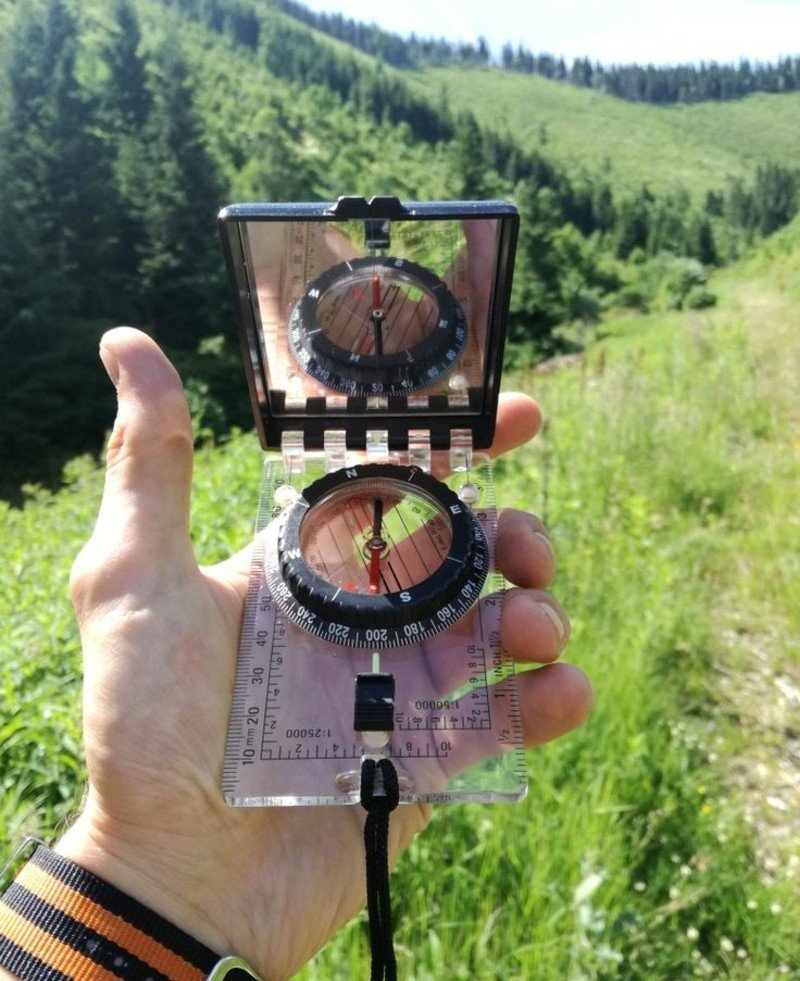
Electronics break. Batteries die. Paper maps work forever if you keep them dry. Buy USGS topographic maps for areas you’ll visit. These show elevation, water sources, and detailed terrain features. REI and outdoor stores sell them for $10-15 each.
State highway maps from gas stations work for basic road navigation. They’re free and show alternate routes when main highways are closed. Learn basic compass navigation before you need it:
i. The red needle points to magnetic north
ii. Line up the map north with the compass north
iii. Follow the bearing directions to reach destinations
A simple orienteering compass like the Suunto A-10 costs $15 and never needs batteries. Practice using it in familiar areas first.
Storage and Organization Tips
You grab your emergency kit during a breakdown. It’s buried under camping chairs, cooking gear, and dirty laundry. By the time you find what you need, you could have walked to the nearest town. Poor storage turns useful emergency supplies into useless junk.
i. Weight Distribution That Won’t Kill Your Van
Heavy emergency items go low and forward in your van. Tools, fluids, and water belong near the front axle. This keeps your van stable and prevents rear-heavy handling problems.
Spread weight evenly side to side. One heavy toolbox on the driver’s side makes your van lean and pull to one side while driving.
Total emergency gear should weigh less than 200 pounds. More weight hurts fuel economy and makes your van harder to control in emergencies.
ii. Accessibility During Real Emergencies
Store frequently needed items in easy-reach locations. Jump starters, tire repair kits, and basic tools belong near doors or in overhead cabinets.
Less common items can go in harder-to-reach storage. You’ll have time to dig for spare parts and backup documents during extended breakdowns.
Label everything clearly. Use large, waterproof labels that you can read with a flashlight. Stress and panic make people forget where they put things.
iii. Maintenance That Happens
Check expiration dates every three months. Set phone reminders or you’ll forget. Expired medications and dead batteries are useless during emergencies.
Test electronic devices monthly. Dead jump starters and uncharged radios fail when you need them most.
Rotate emergency food and water yearly. Use the old supplies for regular meals and replace them with fresh items.
iv. Climate Storage That Protects Your Investment
Heat kills batteries, medications, and electronics. Store sensitive items in insulated boxes or your van’s coolest areas.
Moisture destroys everything over time. Use desiccant packs in storage containers. Replace them when they stop working.
Freezing temperatures crack water containers and kill battery performance. Bring critical items inside during winter camping.
Organize emergency supplies by type in separate containers. Medical supplies in one box, tools in another. This prevents cross-contamination and makes items easier to find during stress.
FAQs
How much does a complete van life emergency kit cost?
A premium kit with top-quality gear runs $1,200-1,500. The expensive items are satellite communicators ($300-400), advanced first aid kits ($200-300), and professional-grade tools ($300-500).
Where do you store 31 emergency items in a small van?
Emergency supplies take up about 8-12 cubic feet of storage space. That’s roughly the size of two large storage bins or one small closet. Store heavy items low and near the front wheels. Tools, fluids, and water go in floor compartments or under seating areas. This keeps your van stable and prevents handling problems.
What emergency items should I buy first if I’m on a tight budget?
Start with medical supplies. You’re more likely to need first aid than any other emergency gear. A good first aid kit costs $50-100 and handles most medical situations. Buy a portable jump starter next ($80-120). Add basic tire repair supplies third ($50-75).
